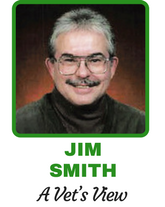
People ask me if I’d like to go back to Vietnam, see how things have changed, revisit battlefields and cities I knew as a Stars and Stripes reporter in 1972. I tell them no, it would be too painful.
Would I want to return to the site of Firebase 42 near Pleiku, where my friend Capt. Glen S. Ivey had his head blown off?
Or to the site where II Corps senior adviser John Paul Vann, a true American hero, and Capt. Robert A. Robertson died in a chopper crash? I don’t think so.
The way Ken Burns and Lynn Novick wove stories of North Vietnamese Army and Viet Cong veterans into their 10-part series “The Vietnam War” gave me some respect and empathy for our enemies; they, too, were used as cannon fodder and asked to fight for an ideology.
Their leaders told them the South Vietnamese they killed were “puppets,” just as U.S. troops were told to kill “gooks.”
They had no airpower, and their infantry was hammered by B-52s, tactical air strikes, napalm, artillery and helicopter-fired rockets. Some NVA were chained to steering wheels in their tanks to prevent them from fleeing. But let’s not forget how ruthless they were.
Am I supposed to shake the hands of NVA veterans, some of whom the series said executed wounded Americans on the battlefield with pistol shots to the head?
They starved our POWs until some died, and tortured others. They cut off arms of children we had inoculated. They killed civilians loyal to the South Vietnamese government, 2,800 alone after Tet in 1968 on their way out of Hue.
After reuniting their country in 1975, they sent tens of thousands to “re-education” camps. You can understand why our veterans hated protesters who waved NVA and National Liberation Front flags at peace demonstrations.
I was upset that episode nine of the series gave short shrift to the “Easter Offensive” that was the backdrop for my memoir “Heroes to the End (www.heroestotheend.com).”
It did mention the siege of An Loc and the loss and recapture of Quang Tri but brushed off the ARVN’s heroic defense of Kontum in the Highlands, where I spent much of my time.
That city never fell, despite the NVA throwing 40 tanks and thousands of troops against it. And how could Burns-Novick not note the June 9, 1972 death of Vann, the subject of Neil Sheehan’s “A Bright Shining Lie,” the best book written on Vietnam?
The series did teach me a lot, though:
*The French were as foolish and vain as we were. In 1953, one of their officers predicted “victory is coming now. We can see it clearly, like the light at the end of a tunnel.”
*Although President John F. Kennedy had doubts about the war, he sent Green Berets to organize Montagnards, an ethnic minority, sent helicopters and armored personnel carriers, authorized use of napalm and Agent Orange, sent 11,300 advisers and authorized the Strategic Hamlet pacification program, copying a French program that had failed.
*South Vietnam was not consulted when President Lyndon B. Johnson began sending troops in 1965.
By 1966, the Viet Cong controlled three-quarters of South Vietnam but Gen. William Westmoreland targeted the NVA and fought a war of attrition based on body count.
*American infantry was used as bait; our troops walked in the jungle to draw fire, then call in air and artillery strikes. Most contacts were initiated by an enemy ambush.
*Defense Secretary Robert F. McNamara had doubts as early as 1965 about our ability to win the war.
*Grenades, mines and booby traps caused one third of American casualties.
*Fifty-six percent of Americans in a Gallup poll approved of the way Chicago police handled demonstrators at the Democratic National Convention.
*Richard M. Nixon had intermediaries tell South Vietnam’s President Nguyen Van Thieu to prolong negotiations at the Paris Peace talks until after Nixon’s expected November 1968 election, saying Nixon would drive a harder bargain, then denied to LBJ that he had done it. That’s treason.
*Shortly after his inauguration, Nixon told intimates “there’s no way we can win the war…but we have to say the opposite.”
*Once Nixon started withdrawing troops and announced his plan for Vietnamization, the South Vietnamese knew they’d eventually lose. “If they couldn’t do it with the Americans,” Duong Van Mai Elliott said of the ARVNs, “how could they do it without them?”
*The National Guard’s killing of four unarmed demonstrators at Kent State in May 1970 partially was a reaction to the torching of the campus ROTC building.
*Nixon’s goal in ordering the massive bombings and mining of Haiphong Harbor that led to victory in the “Easter Offensive” was to keep the South Vietnamese government in place until after Nixon’s expected November 1972 election victory. After that, he told Henry Kissinger, he didn’t care what happened.






